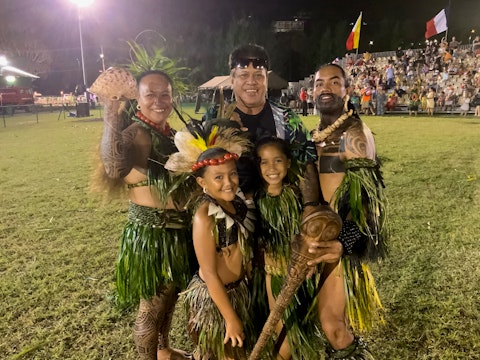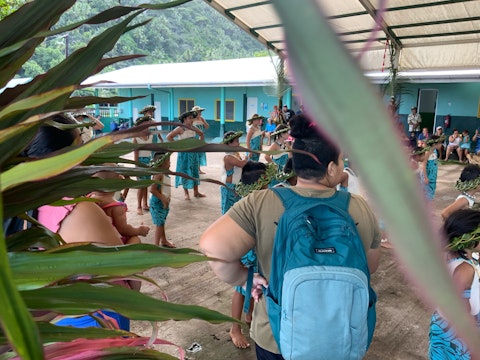Te Henua Enana I Te Fenua Enata - The Land of Human Beings
In the heart of the Pacific Ocean lies an archipelago named Te Henua Enana / Te Fenua Enata, and renamed Marquesas Islands by the colonists
In the heart of the Pacific Ocean lies an archipelago named Te Henua Enana / Te Fenua Enata, and renamed Marquesas Islands by the colonists
The two original names used by the people of the archipelago - Te Henua Enana in the north and Te Fenua Enata in the south - both mean: The Land of Human Beings.
This is the most distant archipelago from any continent on our planet, comprising 12 islands, 6 of which are inhabited today. In Nuku Hiva, Ua Pou, Ua Huka, Hiva Oa, Tahuata, Fatu Hiva, a delicate balance of cohabitation raises themes of mourning and impermanence, memory and transmission, transformation and resilience in these interwoven communities facing the fate of becoming, of surviving.
But let's start at the very beginning, with one of the legends of the creation of The Land of Human Beings. The legend of the creation of Te Henua Enana is recited here in the language of Ua Pou by Joseph Teve Kaiha, Marquesan academician and mayor of Ua Pou.
The legend recounts how, at Atanua’s urging, Atea built a house for his wife by invoking divine forces in the space of one night. Each element of the house represents an island in the archipelago and gives it its evocative name. Here we see the importance of language in understanding the spirit of a people's culture.
According to Teaiki Tohetiaatua, a lesser-known part of the legend relates that Atea hastily built the house on a sandbank and failed to thank the divinities, who then had the house destroyed by one shark. The various elements of the house were scattered: the two poles on one island, the ridge beam on another island, the roof on another, etc.
Nevertheless, Edgar Tetahiotupa reminds us that the legend is still being written today. The Marquesans are in the process of rebuilding the house on solid foundations to ensure that Te Henua Enana, Te Fenua Enata is reunited - resilience is on the march!
English translation of the audio story:
The earth lived in the dark of night, the spirits of the gods swam on the surface of the ocean.
In ancient times, Atea and his wife Atanua lived without a home. One day, the wife said to her husband: "What kind of life do we lead, so deprived of a home?" In the evening, the husband said to his wife: "This very night, I will build our home".
Day fell, night appeared. Atea stood up in the middle of the dark night, invoking the spirit of his ancestors as follows: "Shine, shine, shine the earth, let the spirits join Havaiki. Long Roots, Navel Roots, Short Roots, Work Roots, Huge/Numerous Roots, raise, raise, raise the house!"
At the end of his incantations, Atea chose the location for the house. He took two poles, placed them on the ground, put them in the earth and straightened them, then said: "This is Ua Pou"; the poles are what make the house solid.
He then took the ridge beam and placed it on the two poles, tying them together with ropes made of braided coconut husk. Then he said: "This is Hiva Oa!" Then Atea planted the front poles, the front spinneret, the support poles and the front beam.
Atea fixed the rafters of the front section of the roof to the upper and lower beams, and those of the rear section from the upper beam to the stone terrace. The whole roof was finely assembled. Then he said: "This is Nuku Hiva!" What would the roof be made of? Coconut palms. He assembled the palms of the house using the nine-part technique and said, "This is Fatu Hiva!" His wife said: "The sky is on fire, the sky is on fire". Then he said: "Here is Tahuata!" The light climbed the waves, signalling the nearness of daylight and urging the spirits to return to Havaiki. Suddenly the morning bird sang, signalling the nearness of daylight.
He Atea said: "This is Moho Tani!! Atea gathered up all the debris from the building and threw it into a pit, which he then covered and said: "This is Ua Huka!" The (belly of the) sun was now shining on the celestial vault, and all that could be seen was the land and the house in the middle of the ocean.
Atanua’s voice then resounded: "Behold, the Land of Human Beings shines, shines, shines."
Atea said: "Here is Eiao!"





